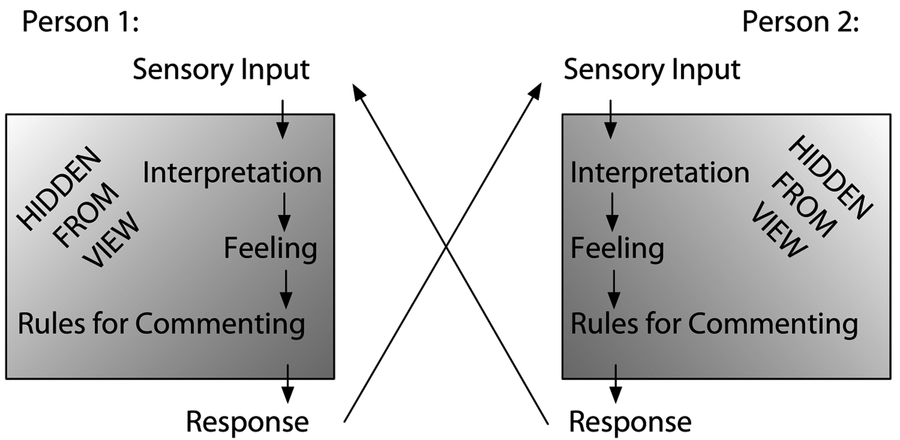Technique: What Goes on Inside Our Heads
Great managers acknowledge that they—and other people—have emotional reactions to situations at work. We hear people make statements such as “He makes me angry.” It’s more accurate to say: “My interpretation of his behavior makes me angry.” Understanding the source of your reactions allows you to manage your response.
Here is a model of interaction we find useful (Figure 16, Satir interaction model).The Internal Dialogue in the Consulting Process [McL85]

Figure 16. Satir interaction model.
- Sensory input.
-
We take in information through our senses. We hear words, tone, and inflection. We see facial expressions, gestures, and posture.
- Interpretation.
-
We attach meaning to the words and other information based on associations and past experience.
- Feeling.
-
We have a feeling based on the interpretation we’ve made.
- Rules for commenting.
-
We may have rules about what we can say and what we keep to ourselves (e.g., “If you can’t say anything nice, don’t say anything at all.”)
- Response.
-
We respond based on our interpretation, feelings, and rules about commenting—and the other person is unaware of all these! Is it any wonder that some interactions are puzzling?
Guidelines
When you feel a strong emotion, check the facts of the situation and search for hidden assumptions. Make a point to test your assumptions—are they really true? Articulate how you interpret the facts. Are there other interpretations?
If you have a strong physical response, you’re probably having a strong emotional response.
Keep a journal of events or situations that seem to provoke a strong response for you. You may be able to detect patterns.
